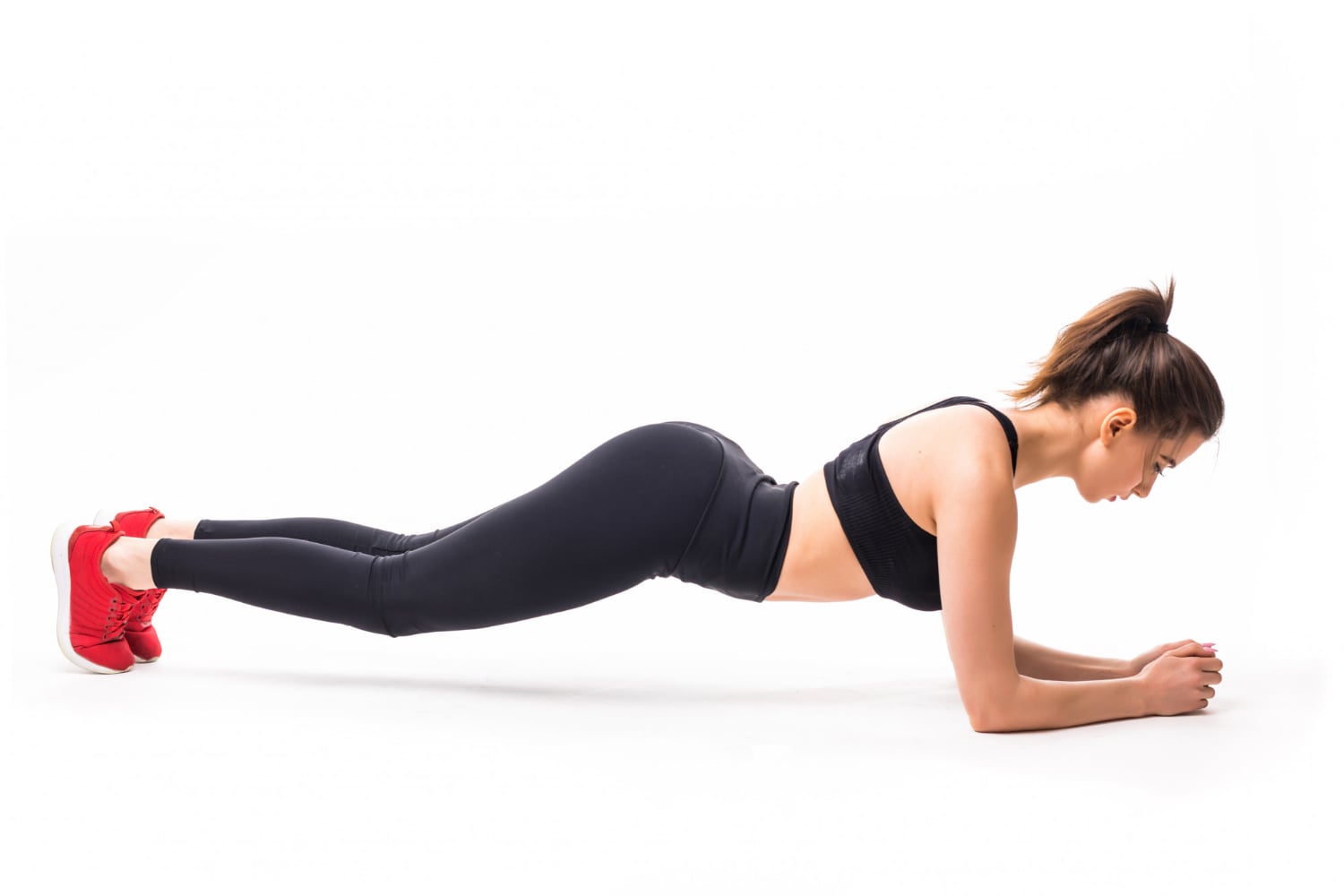Unlock Your Fitness Potential: Top 3 Workout Tips for Women


Women across the globe are breaking barriers and stepping into the world of fitness with enthusiasm and determination.
Regardless of whether the goal is weight loss, muscle building, or simply staying active, understanding the nuances of working out is crucial to achieving success and maintaining health.
This article provides a comprehensive guide on the top three workout tips specifically tailored for women.
Understanding Your Body
Embarking on a fitness journey is a personal and transformative process, and for women, it’s paramount to understand the unique needs and nuances of their bodies. Hormones play a significant role in women’s health, influencing everything from energy levels to muscle recovery. Recognizing the impact of menstrual cycles, hormonal fluctuations, and other physiological aspects is the first step in crafting a workout routine that is not just effective but also harmonious with your body’s natural rhythms.
Women's bodies are unique and respond differently to exercise at various times of the month. For example, during the follicular phase of the menstrual cycle, estrogen levels rise, potentially enhancing strength and endurance. Leveraging this period for more intense strength training or high-intensity interval training (HIIT) can lead to impressive gains. On the other hand, during the luteal phase, as progesterone increases, some women might experience a dip in energy, making it an optimal time for lighter, restorative activities like yoga or swimming.
Recognizing these patterns, understanding your body’s signals, and adapting your workout routine accordingly can enhance performance, aid in faster recovery, and contribute significantly to your overall well-being.
- Incorporating Variety: A balanced workout routine is akin to a well-rounded diet. Just as you need a variety of nutrients to stay healthy, your body needs a mix of different exercises to function at its best. Incorporating a variety of workouts not only optimizes physical health but also keeps the mind engaged and motivated.
Cardiovascular exercises, like running, cycling, or swimming, are essential for heart health and endurance. Strength training, whether it's with weights, resistance bands, or bodyweight exercises, helps build muscle, boost metabolism, and improve bone density. Flexibility exercises such as yoga or Pilates enhance mobility, reduce the risk of injuries, and improve overall performance.
For women, especially, balancing these elements is key. Incorporating strength training can counteract the loss of muscle mass and bone density that comes with aging, while flexibility exercises can alleviate menstrual discomfort and enhance circulation. Cardiovascular activities contribute to heart health, an important consideration as heart disease is a leading cause of death for women worldwide. - Setting Realistic Goals: Setting goals is the compass that guides your fitness journey, providing direction, motivation, and a sense of purpose. Women should set SMART goals - Specific, Measurable, Achievable, Relevant, and Time-bound - to lay down a clear path to success.
Specific goals are clear and concise, leaving no room for ambiguity. Instead of a vague goal like "get fit," opt for something more precise, like "run a 5K in 30 minutes." Make your goals measurable so you can track your progress. An achievable goal takes into account your current fitness level and lifestyle, ensuring that it’s challenging yet attainable. Ensure that your goals are relevant to your personal values and long-term vision. Finally, set a time-bound deadline to create a sense of urgency and keep you on track.
Remember, the journey to fitness is a marathon, not a sprint. Women should focus on making sustainable changes, celebrating small victories along the way, and continuously reassessing and adjusting their goals as needed. - Embracing Progressive Overload: To continue making progress in your fitness journey, embracing the principle of progressive overload is crucial. This involves gradually increasing the intensity of your workouts over time, challenging your body to adapt and grow stronger.
Women, in particular, should not shy away from lifting heavier weights. Contrary to popular belief, strength training does not lead to a bulky physique; instead, it helps in building lean muscle, enhancing metabolism, and sculpting a toned body. Start with a weight that is challenging but allows you to maintain proper form, gradually increasing the weight or resistance as your strength improves.
Incorporating a variety of rep ranges and workout intensities can also contribute to progressive overload. Mixing low-rep, high-weight exercises with high-rep, low-weight workouts ensures a balanced routine that targets different muscle fibers and aspects of fitness. - Paying Attention to Nutrition: No workout routine is complete without proper nutrition. Fueling your body with the right nutrients is essential for performance, recovery, and overall health. Women should pay particular attention to their dietary needs, ensuring a balanced intake of proteins, carbohydrates, fats, vitamins, and minerals.
Protein plays a crucial role in muscle repair and growth. Including a source of lean protein in every meal, such as chicken, fish, legumes, or dairy, supports recovery and aids in building lean muscle. Carbohydrates are the body’s primary energy source, especially crucial for high-intensity workouts. Opt for whole, unprocessed carbs like fruits, vegetables, and whole grains for sustained energy.
Don’t forget about healthy fats, which are vital for hormone production, including the hormones that help regulate muscle growth and inflammation. Incorporate sources of omega-3 and omega-6 fatty acids, found in fish, nuts, and seeds, into your diet.
Hydration is another key component of a balanced routine. Water supports every metabolic function and nutrient transfer in the body, and adequate hydration improves performance, aids digestion, and helps keep joints lubricated. - Creating a Supportive Environment: A supportive environment can make a world of difference in your fitness journey. Surrounding yourself with positivity, encouragement, and like-minded individuals can provide the motivation and accountability needed to stay on track.
Consider joining a fitness class, hiring a personal trainer, or enlisting a workout buddy. These support systems provide not just motivation but also guidance, ensuring that you’re performing exercises correctly and efficiently.
Don’t underestimate the power of a positive mindset. Cultivating a can-do attitude, celebrating your progress, and learning from setbacks turns the fitness journey into a rewarding and enriching experience.
Conclusion
Creating a balanced workout routine is a holistic process that extends beyond the gym. It encompasses understanding your body, incorporating a variety of exercises, setting realistic goals, embracing progressive overload, paying attention to nutrition, and fostering a supportive environment. For women looking to embark on or enhance their fitness journey, these elements are the building blocks to success, leading to a healthier, stronger, and more empowered version of yourself.
Embarking on a fitness journey demands more than just a well-thought-out workout plan and a balanced diet; it requires a reservoir of motivation and a steadfast commitment to consistency. For women, navigating the unique challenges and milestones of life, these elements become even more pivotal. Cultivating consistency and sustaining motivation are the linchpins that can transform fleeting enthusiasm into a lasting lifestyle change.
The Power of Routine
Establishing a routine serves as the bedrock of consistency. By carving out specific times for workouts and making them a non-negotiable part of your day, you foster a sense of habit. Women, often adept at juggling multiple responsibilities, can harness the power of routine to seamlessly integrate fitness into their daily lives. This could mean morning workouts for those who prefer to start their day with energy and vigor or evening sessions for those who wish to decompress after a day’s work.
Setting Realistic Goals
Goal-setting is a potent motivator, providing direction and purpose to your fitness journey. However, the key lies in setting realistic, achievable goals. Whether it’s losing a specific amount of weight, running a certain distance, or mastering a new exercise, your goals should stretch your capabilities while remaining attainable. For women, acknowledging and celebrating the small victories along the way fosters a sense of achievement and propels you forward.
Finding Your 'Why'
Understanding your motivation, your 'why', adds a deeper layer of commitment to your journey. It could be striving for better health, building strength, or boosting mental well-being. Women, in particular, may find motivation in setting a positive example for their families, reclaiming time for themselves, or enhancing their quality of life. Your 'why' serves as a beacon, guiding you through moments of doubt and maintaining your focus on the long-term vision.
Embracing Variety
As previously discussed, incorporating variety into your workout routine prevents monotony and keeps things interesting. Trying new exercises, experimenting with different workout formats, or even taking your workout outdoors can inject a dose of excitement into your routine, sustaining your motivation and adherence.
Building a Support Network
Having a robust support network can significantly enhance your motivation and consistency. This could be a workout buddy, a supportive partner, or a community of like-minded individuals. Women often thrive in communal settings, and being part of a fitness community provides a space for encouragement, accountability, and shared experiences.
Celebrating Progress
Recognizing and celebrating progress, no matter how small, is vital. It could be lifting heavier weights, noticing improvements in your endurance, or simply feeling more energized and positive. Women, in particular, should take pride in their progress, understanding that every step forward is a victory in its own right.
Staying Flexible
While consistency is key, maintaining flexibility in your approach ensures sustainability. Life happens, and there will be days when sticking to your routine is challenging. Women, navigating the ebb and flow of life, can stay on track by being adaptable, making adjustments as needed, and understanding that progress is not always linear.
Harnessing Positive Reinforcement
Positive reinforcement plays a crucial role in sustaining motivation. This could take the form of a reward system, where you treat yourself after achieving a specific goal or simply acknowledging your hard work and dedication. Positive self-talk and maintaining a optimistic mindset are equally important, as they foster a sense of self-belief and determination.
Prioritizing Self-Care
In the pursuit of fitness goals, the importance of self-care cannot be overstated. Ensuring adequate rest, engaging in activities that bring joy, and taking time to relax and rejuvenate are all essential. For women, integrating self-care practices into their routine not only aids in recovery but also enhances overall well-being, contributing positively to their fitness journey.
Keeping the Bigger Picture in Mind
Finally, maintaining a long-term perspective ensures that you stay grounded and focused. Fitness is a lifelong journey, and consistency over time yields the most significant results. Women, in embracing this journey with patience and resilience, lay the groundwork for lasting change, improved health, and enhanced quality of life.
Staying consistent and motivated is a dynamic process, influenced by internal and external factors. By establishing routines, setting realistic goals, finding your 'why', and building a supportive network, women can navigate this journey with grace and tenacity. Celebrating progress, staying adaptable, and prioritizing self-care further enrich the experience, transforming the pursuit of fitness into a fulfilling and sustainable lifestyle.
When charting the course for a successful and sustainable fitness journey, the significance of recovery cannot be understated. It is a vital component that too often gets overshadowed by the hustle and bustle of intense workouts and striving for constant progression. Women, in particular, must prioritize recovery to safeguard their health, optimize performance, and pave the way for long-term success in their fitness endeavors.
The Science Behind Recovery
Understanding the science behind recovery illuminates why it is paramount. During exercise, muscles undergo stress, leading to microscopic damage to muscle fibers. This process is normal and, in fact, crucial for building strength and endurance. However, the magic of muscle building and recovery happens not during the workout, but afterward, when the body goes to work repairing and rebuilding muscle tissue. Adequate recovery ensures that this process can occur efficiently, reducing the risk of injury and setting the stage for stronger, more resilient muscles.
The Role of Sleep
Sleep stands as one of the pillars of effective recovery. It is during deep sleep that the body releases growth hormone, facilitating muscle repair, and regeneration. Women should aim for 7-9 hours of quality sleep per night, establishing a consistent sleep schedule and creating a restful bedtime environment. Paying attention to sleep hygiene, including limiting exposure to screens before bedtime, can enhance sleep quality, aiding in optimal recovery.
Nutrition and Hydration
Proper nutrition and hydration play pivotal roles in the recovery process. Consuming a balanced meal or snack with protein and carbohydrates within the “golden hour” post-exercise kick-starts muscle recovery, replenishing glycogen stores, and providing the building blocks for muscle repair. Women should pay particular attention to their iron levels, as iron deficiencies are more common in women and can impede recovery and performance.
Hydration is equally crucial. Water plays a myriad of roles in the body, from transporting nutrients to aiding in digestion and joint lubrication. Ensuring adequate hydration before, during, and after exercise supports optimal bodily functions and recovery.
Active Recovery
Active recovery entails engaging in low-intensity exercise during the recovery period, enhancing blood flow to muscles and aiding in the elimination of waste products accumulated during intense activity. Activities like walking, cycling at a gentle pace, or swimming offer effective means of active recovery. For women, incorporating activities like yoga or Pilates can provide the dual benefits of gentle movement and stress relief, contributing positively to the recovery process.
Stretching and Mobility Work
Incorporating stretching and mobility work into the recovery routine aids in maintaining and improving range of motion, reducing muscle stiffness, and enhancing circulation. Static stretches held for 15-30 seconds target specific muscle groups, while dynamic stretches incorporate movement, preparing the body for activity. Women may find particular benefit in focusing on areas prone to tightness, such as the hips and shoulders, dedicating time to stretching and mobility work as part of their recovery routine.
Listening to Your Body
A key aspect of prioritizing recovery is developing body awareness and learning to heed its signals. Women should pay close attention to signs of overtraining, including persistent fatigue, decreased performance, disrupted sleep, and mood swings. Taking rest days when needed, adjusting workout intensity, and seeking professional advice if symptoms persist are essential steps in honoring your body’s need for recovery.
The Psychological Aspect of Recovery
Recovery isn’t solely a physical endeavor; it encompasses the psychological realm as well. Managing stress, fostering a positive mindset, and avoiding the pitfalls of comparison are integral to the recovery process. Practices like mindfulness, meditation, and deep-breathing exercises can cultivate a sense of calm and resilience, contributing positively to both mental well-being and physical recovery.
Embracing Self-Care
Self-care practices, including massage, foam rolling, and adequate sleep, play a supportive role in recovery. They not only aid in muscle recovery but also provide a space for mental relaxation and rejuvenation. Women, often adept at caring for others, must remember to extend that care to themselves, embracing self-care as a non-negotiable part of their fitness routine.
The Role of Community and Support
Having a supportive community, whether it’s family, friends, or fellow fitness enthusiasts, can significantly enhance the recovery process. Sharing experiences, seeking advice, and fostering a sense of belonging contribute to a positive mindset and adherence to recovery practices.
Long-Term Perspective
Prioritizing recovery is an investment in long-term health and fitness. It ensures sustainability, reduces the risk of injury, and enhances overall well-being. Women, in adopting a holistic approach to recovery, are laying down the foundations for a lifetime of health, strength, and vitality.
By embedding recovery as a cornerstone of their fitness routine, women empower themselves to train smarter, perform better, and embrace a balanced, health-centric lifestyle. The journey to fitness is not defined by how hard you push in each session, but by how well you recover, adapt, and grow stronger over time.
Conclusion

Embarking on a fitness journey stands as a powerful testament to one’s commitment to personal growth and well-being. For women, this path requires an amalgamation of dedication, profound knowledge, and the cultivation of the right mindset to navigate the unique challenges and celebrate the victories that come with each workout.
Creating a balanced routine is the cornerstone of any successful fitness endeavor. By incorporating a diverse array of exercises, women ensure that their workouts remain engaging, challenging, and effective. This balanced approach prevents overtraining, reduces the risk of injury, and promotes holistic health, addressing strength, flexibility, endurance, and balance all at once. It’s about building a sustainable practice that enhances your life, not just a series of strenuous activities.
Recovery, often overlooked in the zeal to achieve quick results, is a critical component of any fitness journey.

It is during this phase that the body heals, adapts, and becomes stronger. Women, in particular, should heed the importance of adequate rest, proper nutrition, and engaging in recovery practices like stretching, foam rolling, and perhaps even meditation. Prioritizing recovery translates to improved performance, reduced fatigue, and a lower risk of injury, ensuring that every workout brings you a step closer to your goals.
Staying consistent and maintaining motivation are the fuels that keep the fire of your fitness journey burning brightly. Consistency breeds habit, and habit breeds results. Women can find motivation from a variety of sources, whether it’s setting and achieving specific goals, tapping into a supportive community, or simply enjoying the endorphin rush that comes with a good workout. Staying motivated, however, is not just about pushing through the tough days; it’s also about celebrating the small victories, acknowledging your progress, and appreciating the journey.
Remember, the path to fitness is not a race; it’s a journey, and the journey is just as important as the destination.

Each step taken is a step towards better health, increased strength, and improved well-being. Women embarking on this journey have the unique opportunity to transform not just their bodies, but their minds and spirits as well.
Embrace each workout, relish in the progress, and let the transformative power of fitness work its magic. Your commitment to creating a balanced routine, prioritizing recovery, and fostering consistency and motivation will undoubtedly pave the way for achieving your health and wellness goals. And through it all, the journey itself becomes a source of strength, empowerment, and joy. So, cherish every moment, stay dedicated, and watch as the world of fitness transforms your life from the inside out.

